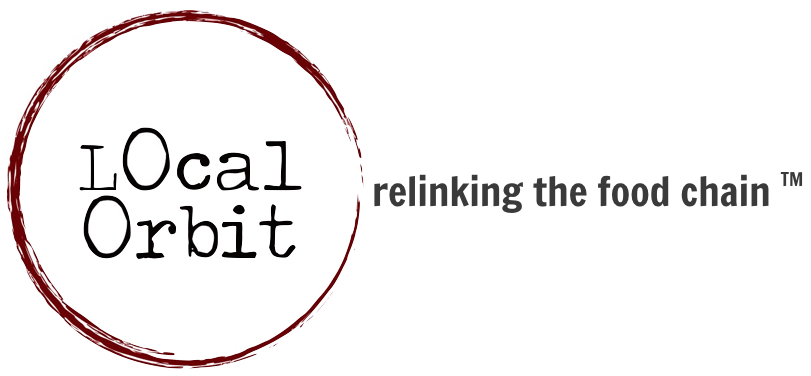This piece by Erika Block and Nina Ignaczak originally appeared on Food Tech at part of Hack Dining, an online conversation exploring how we might use technology and design to hack a better future for dining.
Human brains are wired for story; this is what makes us human and enables us to learn, communicate, remember and act. In “Wired for Story,” Lisa Cron writes “Story, as it turns out, was crucial to our evolution—more so than opposable thumbs. Opposable thumbs let us hang on; story told us what to hang on to.”
As hunter-gatherers, we learned the value of various food items by constructing and communicating the narrative of our diets: the setting of our landscape, the characteristics of the plants and animals that inhabited it, the timing of their ripening, the details of their harvest and preparation. As agriculturalists, we became authors, writing the stories of the land we cultivated.
Throughout history, each chapter in our food chain story has informed the hunter, the farmer, the processor, the wholesaler, the chef, the food maker, the retailer and, ultimately, the consumer, helping them know what happened before, what they need to do next and when they need to do it.
In our deeply centralized, industrialized food system, the food chain story has become long, complicated and opaque. This is both by design and by accident. It’s a result of both the sheer scale of the system and the kinds of efficiencies that allow it to exist—the details of which factory farmers, large processors and distributors would often rather keep under wraps.
Technology enables our industrial food system. It started with plows and tractors and processing technology, and expanded with the technology required to build highways and bridges and refrigeration. It continues today with GMO’s, RFID’s, precision agriculture and robotic planting. Walmart, which has the world’s largest food supply chain, also has the largest, and perhaps most sophisticated, information technology infrastructure of any company in the world.
We are familiar with the problems created by this system. We see the obesity epidemic around us, hear news reports almost weekly of contamination, foodborne illness and recalls and experience the impact of centralization on family farms and local economies.
We also see nascent efforts to relocalize the food system and fix these problems.
Over the past dozen years, local food sales have grown an average of 18% annually, while conventional food sales have essentially flatlined. New production and distribution businesses, new farms and local supply chains are emerging at a rapid pace. Almost daily, we learn about a new food hub focusing on local products, a new group of farmers joining forces to market their crops, a kitchen incubator that helps foodmakers launch new products or a hospital or university initiative to increase local sourcing to 20% in the next ten years.
Clearly there is a desire and a market for healthier food created by producers in our community whom we know and trust, but the reality is that local food sales currently represent about .0005% of total U.S. food sales. To get beyond this infinitesimal number and truly capture a share of the market that reflects the demand, the people who are rebuilding local food systems need tools that enable them to compete with the industrial food system.
Relocalizing the food supply chain will require more than the vision and passion of individual pioneers or the good intentions of large institutions. Like the industrial food system, robust local food systems will require sophisticated technology infrastructure—but infrastructure that values regional diversity and transparency over consolidation.
Aggregating the New Food Supply Chain Narratives
Local food entrepreneurs are creating an ever-increasing number of shorter, more transparent food chain stories. And because there are fewer players, there are fewer stories to track, which enables greater transparency. But these stories are also as fragmented as they are diverse. How does a large university or a school district deal with hundreds of local producers and suppliers?
The industrial food system solved the fragmentation issue by creating efficiencies through consolidation and standardization.
But it is also built on technological capacity to share information—stories—in real time. Re-localizing the food system requires the same kinds of tools, built not with the opacity of the industrial food system or the current silos that define the disconnected local and regional distribution system we have today, but instead with transparency and openness. We need a new technology infrastructure that connects local markets and builds a collaborative network of trading partners who share these values.
This is the challenge Local Orbit is addressing.
Instead of aggregating commodities, Local Orbit’s technology connects diverse local growers, foodmakers, aggregators, food service purchasers, transportation providers and consumers who comprise a local food system. We help people tell the right story, to the right person, at the right time, so they can make sure the right things happen, safely and openly, as food moves from field to plate. It’s a path for independence and diversity to thrive through connectivity and networks.
We enable the food service managers of large hospital systems to purchase the necessary volume without compromising on quality, while meeting their local procurement targets. We help restaurant chefs be competitive in their communities, making it as easy for them to purchase from local producers easily as it is to purchase from a large distributor—and easier to tell their customers the story of the food they serve. We help small farms collaborate with their neighbors to bring crops to market efficiently. In doing so we help them reduce costs, reduce waste and errors, save time and expand markets.
As this network grows, it will dull the competitive edge of the industrialized food system. Local will become the default, the easy and obvious choice—by tapping into that which makes us most human: our innate capacity for utilizing the power of story.

